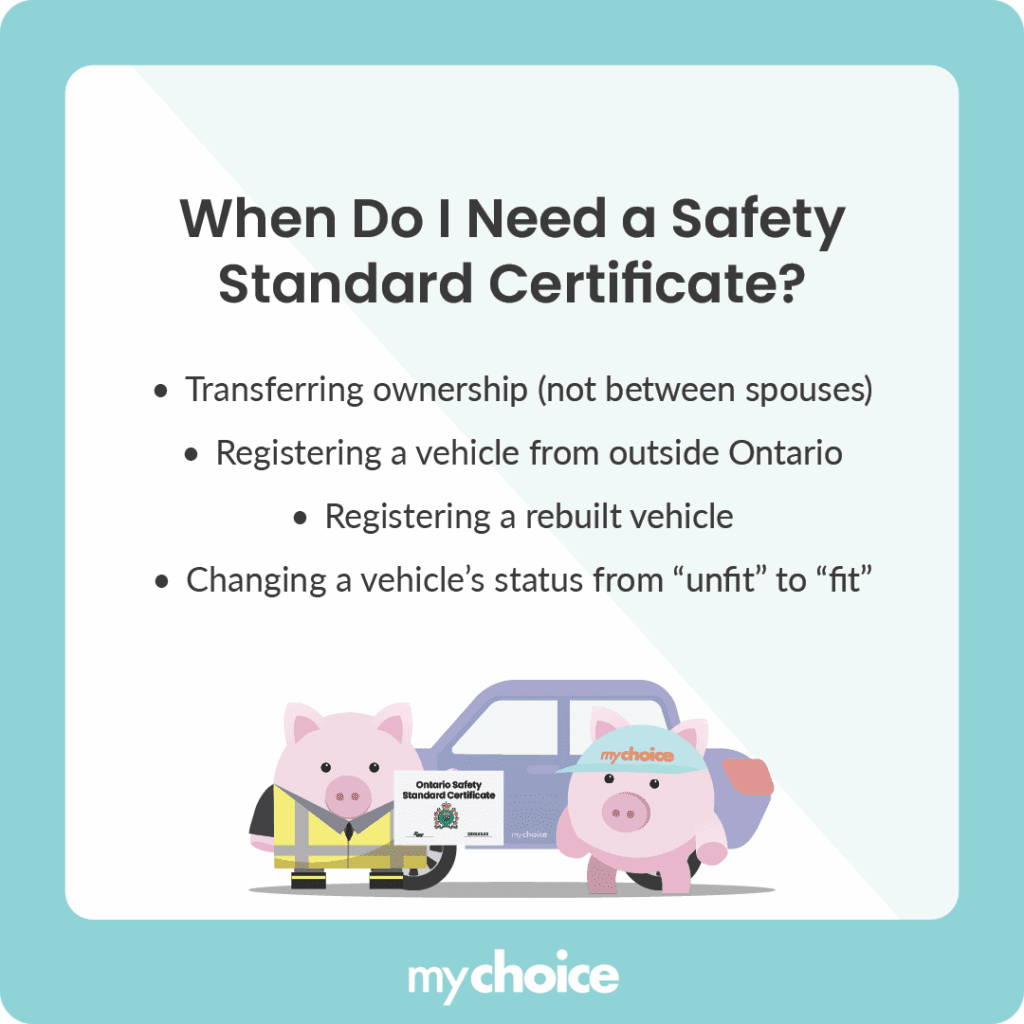Before putting a license plate on a car in Ontario, you need a safety standards certificate. A safety standards certificate ensures that your vehicle passes the minimum safety standards in Ontario and is fit to drive.
Why do you need a safety standards certificate, and where can you get one? In this guide, we provide detailed information on passing a safety inspection and obtaining a safety standards certificate.
New Ontario Safety Inspection Requirements
The Ontario Passenger/Light-Duty Vehicle Inspection Standard Handbook was last updated in October 2015, and the actual checklist hasn’t changed much in the last decade or so. However, as of the end of 2024, the paper safety standard safety program has been phased out for the electronic-based DriveON-sponsored program. All of the changes are on the inspector’s end, where they now record inspection details on tablets that directly transfer that information to the Ministry of Transportation.
What is a Safety Standard Certificate?
A safety standards certificate is a document given to a car that passes a safety inspection in an accredited garage. This certificate only guarantees that the vehicle in question meets the minimum safety requirements to be roadworthy in Ontario. Your car needs to have a safety standards certificate before you can legally put a license plate on it.
This certificate does not ensure that the car is in good condition or act as a warranty. A safety standards certificate is only valid for 36 days after it is issued.
When Do I Need a Safety Standard Certificate?
You need a safety standard certificate and inspection in four situations:
- Transferring ownership of a used vehicle to or from a person who is not your spouse
- Registering a vehicle from another province or country in Ontario
- Registering a rebuilt vehicle
- Upgrading an unfit vehicle’s status to fit

Where Can I Get a Safety Standard Certificate?
Auto garages licensed by the Ministry of Transportation of Ontario (MTO) can perform a safety check for your car and issue a safety standards certificate, eligible garages will have signage labelled with “Motor Vehicle Inspection Station.”
How Much Does it Cost to Get a Safety Certificate in Ontario?
Safety certificates cost differently for every Motor Vehicle Inspection Station because inspection costs may vary depending on your vehicle type and labour costs. On average, you can expect to pay around $60-120 for inspections.
Is a Safety Certificate Required for Car Insurance?
A safety certificate isn’t strictly required for car insurance in Ontario, nor do you need one to buy and register a vehicle. However, you need a safety certificate to put a licence plate on your vehicle. So, a safety certificate is still ultimately needed to be able to drive your car legally.
What Does a Safety Inspection Involve?
A safety inspection involves thoroughly checking a car’s systems and moving parts. A car safety inspection checklist typically includes the following areas in your car:
- Accelerator linkage
- Brakes
- Steering
- Suspension
- Mirrors
- Exhaust system
- Electrical system
- Fuel system
- Tires
- Lamps and reflectors
- Neutral safety switch
- Horn
- Bodywork
- Frame components
- Belts and hoses
- Coupling devices
- Seats and seatbelts
- Wheel mounts and rims
- Windshields and windows
- Windshield wipers
In addition to these areas, your car must also pass a road test to qualify for a safety standards certificate. If your vehicle needs repairs, you will not be able to get a safety standards certificate until the necessary repairs have been done. You can find a copy of the Passenger/Light-Duty Vehicle Inspection Standard online.
How Can I Prepare for a Safety Inspection?
You can prepare for a safety inspection by ensuring your vehicle is in good working condition. Before you shell out the cash to acquire a safety standards certificate, you may want to give yourself the best chance of passing a car safety inspection.
Here are a few things that you can repair or replace before a safety inspection to give your car the best chance of passing:
Key Advice from MyChoice
- You can get car safety checks at licenced auto garages. They usually have a sign that says “Motor Vehicle Inspection Station.”
- Safety inspection prices can vary due to car type, garage labour costs, and other factors.
- Addressing any outstanding issues with your car before taking it to a safety inspection is a good idea.








